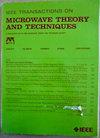Compact Bi-Directional PA-LNA Using Stacked Power Amplifier Enhancing Linearity and Stability
IF 4.1
1区 工程技术
Q2 ENGINEERING, ELECTRICAL & ELECTRONIC
IEEE Transactions on Microwave Theory and Techniques
Pub Date : 2025-01-01
DOI:10.1109/TMTT.2024.3520344
引用次数: 0
Abstract
This article presents a compact Ka-band bi-directional power amplifier-low-noise amplifier (PA-LNA) utilizing a three-stack power amplifier (PA) in a 28-nm CMOS process. In the proposed PA-LNA, the input and output of the three-stack PA are cross-coupled with the output and input of the common-source (CS) low-noise amplifier (LNA). This configuration neutralizes the gate-drain capacitance of the LNA through the parasitic capacitance (采用堆叠功率放大器的紧凑型双向PA-LNA,提高线性度和稳定性
本文介绍了一种紧凑的ka波段双向功率放大器-低噪声放大器(PA- lna),采用28纳米CMOS工艺的三叠功率放大器(PA)。在所提出的PA-LNA中,三叠PA的输入和输出与共源(CS)低噪声放大器(LNA)的输出和输入交叉耦合。该配置通过寄生电容($C_{\text {para})中和LNA的栅极漏极电容。}$),提高了LNA模式下的稳定性和增益。同时,三叠PA在PA模式下可以实现更高的输出功率和增益。此外,由于$C_{\text {para}。由于采用串联方式,PA和LNA的晶体管尺寸可以非对称选择,从而减轻了PA模式下线性度和LNA模式下直流功耗之间的权衡。此外,通过堆叠更多的晶体管并施加适当的偏置使它们保持在关闭状态,可以增强关闭状态PA的输出电导,从而提高LNA模式下的噪声系数(NF)。此外,基于变压器的开关匹配网络(MNs)可以在0.1 mm2的紧凑模具面积内实现完全双向操作。在PA模式下,该PA- lna在3db带宽为8.1 GHz (27.3-35.4 GHz)的情况下,峰值增益为20.4 dB,饱和输出功率($P_{\text {sat}}$)为17.4 dBm,峰值功率附加效率(PAE)为17.2%,误差矢量幅度(EVM)为−32.0 dB,符号速率为800 mbaud,平均输出功率为7.6 dBm。在LNA模式下,所提出的PA-LNA的峰值增益为17.3 dB, 3db带宽为8 GHz (28.0-36.0 GHz),噪声系数(NF)为5.3 dB,输入三阶截距(IIP3)为0 dBm。
本文章由计算机程序翻译,如有差异,请以英文原文为准。
求助全文
约1分钟内获得全文
求助全文
来源期刊

IEEE Transactions on Microwave Theory and Techniques
工程技术-工程:电子与电气
CiteScore
8.60
自引率
18.60%
发文量
486
审稿时长
6 months
期刊介绍:
The IEEE Transactions on Microwave Theory and Techniques focuses on that part of engineering and theory associated with microwave/millimeter-wave components, devices, circuits, and systems involving the generation, modulation, demodulation, control, transmission, and detection of microwave signals. This includes scientific, technical, and industrial, activities. Microwave theory and techniques relates to electromagnetic waves usually in the frequency region between a few MHz and a THz; other spectral regions and wave types are included within the scope of the Society whenever basic microwave theory and techniques can yield useful results. Generally, this occurs in the theory of wave propagation in structures with dimensions comparable to a wavelength, and in the related techniques for analysis and design.
 求助内容:
求助内容: 应助结果提醒方式:
应助结果提醒方式:


